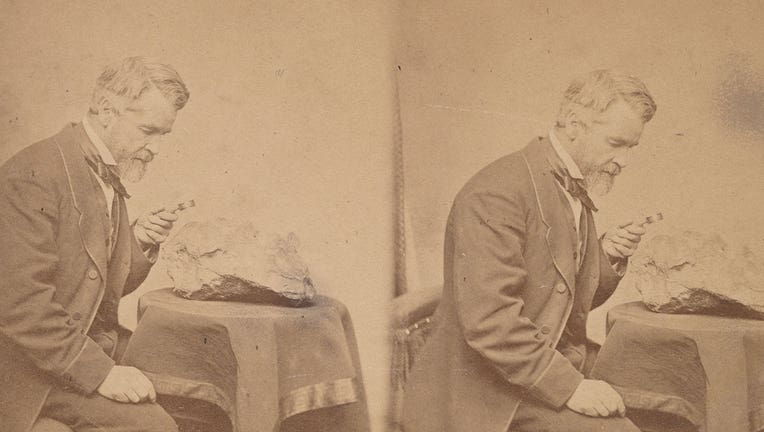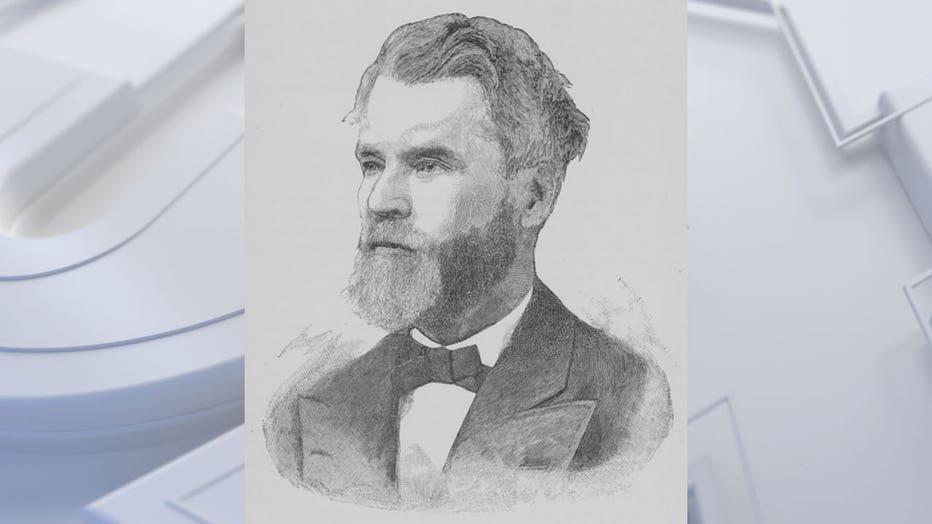Milwaukee scientist known as 'Father of the National Weather Service'

Portrait of Increase Allen Lapham (1811-1875) - Examining the Wisconsin Meteorite, Circa 1868. Artist Hugo Broich. (Photo by Heritage Art/Heritage Images via Getty Images)
MILWAUKEE - Increase Allen Lapham was one of Wisconsin's first scientists, who became a catalyst of the first Weather Bureau that we now call the National Weather Service.
As immigration to Wisconsin expanded in the 1840's, so did the science and technology community.
About Increase Allen Lapham
Dig deeper:
Lapham migrated to Wisconsin from New York in 1836. He spent his first 10 years in Wisconsin evaluating the state and recording meteorological measurements. In 1849, Lapham started providing weather reports to the Smithsonian Institute in Washington, D.C. While doing work for the Smithsonian, he noticed how important weather was to the Wisconsin pioneers, where most of them were farmers. The Great Lakes also played a significant role for shipping companies that traded and delivered resourceful goods.
Dr. Lapham later created an observation site for the Smithsonian at his home in Milwaukee – which is now where the Fiserv Forum facility stands. He would use meteorological tools such as the barometer, a barograph, and a rain gauge to document atmospheric data twice a day and send the reports to the Smithsonian Institute.
The Smithsonian Institute then created other observation sites across the United States, providing a consistent stream of meteorological reports and data.

Engraved portrait of American scientist Increase A Lapham, circa 1850-1875. (Photo by Kean Collection/Archive Photos/Getty Images)
Weather observations
The backstory:
Weather observations across the country continued to grow. In fact, the electrical telegraph was invented and provided a way to send information in an instant throughout the country. Lapham used the electrical telegraph as a resource to help farmers and protect shipping on the Great Lakes. He figured if he could get the data from the weather observation stations around the country, then he could predict the weather that would be coming to Wisconsin, so the people of Wisconsin could prepare themselves for the weather that was to come. Previously, this wasn't possible because the weather was faster than horses and the trains.
SIGN UP TODAY: Get daily headlines, breaking news emails from FOX6 News
Increase Lapham continued to work tirelessly to help local officials establish an organization to spread information to predict the weather. He had little success at first. Then he partnered with Halbert Paine, who was a congressman for Milwaukee, to make a proposal for a resolution to Congress. On February 2, 1870, a Joint Congressional Resolution requiring the Secretary of War.
What they're saying:
"to provide for taking meteorological observations at military stations in the interior of the continent, and at other points in the States and Territories...and for giving notice on the northern lakes and on the seacoast, by magnetic telegraph and marine signals, of the approach and force of storms" was introduced.
President signs resolution
The backstory:
A week later on February 9, 1870, President Ulysses Grant signed the resolution into law. A new national weather bureau was born on November 1, 1870, within the US Army Signal Service Corps. The first name of the national weather bureau was called, "The Division of Telegrams and Reports for the Benefit of Commerce". We all know it as the "National Weather Service" today. Lapham made the first forecast on November 8th, warning of high winds on the Great Lakes. He was credited and honored for protecting lives and saving property in the Great Lakes region.
FREE DOWNLOAD: Get breaking news alerts in the FOX LOCAL Mobile app for iOS or Android
In 1875, Lapham died of a heart attack. However, his legacy still lives on. We still depend on the National Weather Service today for all of our weather updates across the country. Because of technology's evolution, we are now able to see weather alerts that can pop up on your phone to help keep you safe.
The Source: The information in this post was provided by the National Weather Service and Wisconsin 101.

